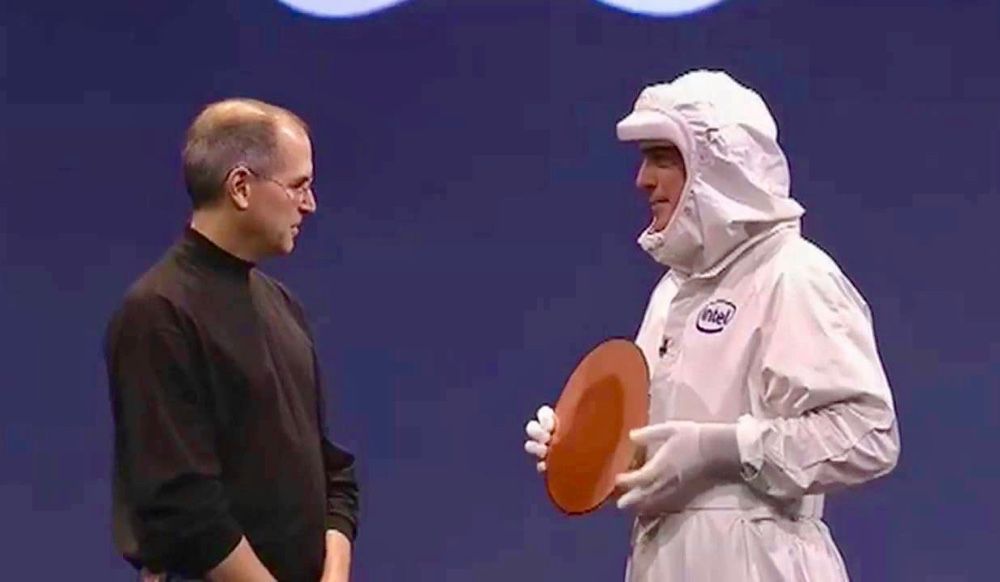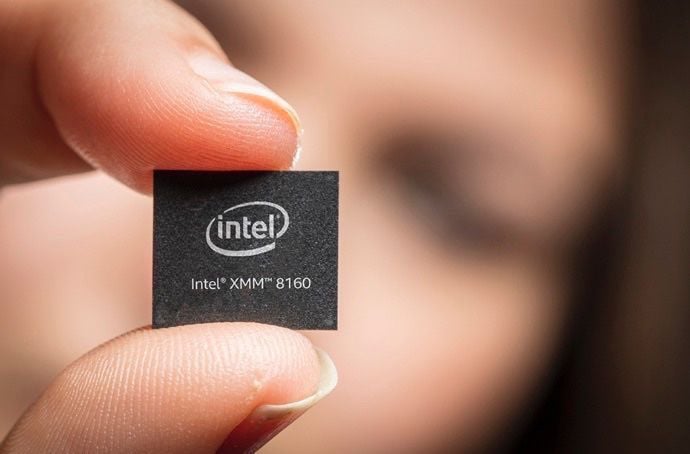
The first fracture does not concern the Mac, but the iPhone. Having become a 4G modem provider since 2016, Intel will not be re-appointed to this position for 5G. It is Qualcomm who wins, even though Apple had started a great legal battle against his former partner.
As a result of this turnaround, Intel is simply abandoning the market for 5G chips for smartphones, since the contract with Apple should have been its main source of income, if not the only one. "In the network chip market for smartphones, it has become clear that there is no path to profitability," says Bob Swan, CEO of Santa Clara, following the announcement of the multi-year partnership between Apple and Qualcomm.
Apple was clearly committed to fighting a Qualcomm she considered too much royalties. Still, someone had to give him tens of millions of modems at the same time each quarter. Intel fulfilled this mission initially partially for the iPhone 7, 8 and X, then integrally for the iPhone XS and XR.
Intel's technological backlash against Qualcomm over 4G was tolerable, though it was clearly not sustainable on 5G. A delay in part due to the loss of Apple as a customer a few years earlier, Cupertino has signed an exclusive contract with Qualcomm ...

Before the announcement of the new partnership between Apple and Qualcomm, Fast Company had revealed that Cupertino no longer trusted Intel to receive its 5G XMM 8160 modem in time for the iPhone 2020. Even if the founder has denied being late, the article pointed out other points of contention.
Managing the relationship with the very demanding Apple customer would be a daunting task, at least three people would have succeeded this position within Intel. Beyond that, it is the partnership with Cupertino that would debate internally.
Fast Company suggests that Intel's new CEO Bob Swan, the company's former chief financial officer, was able to help put an end to the deal and focus on more profitable activities.
Intel had to advance on the 5G while, at the same time, Apple was hiring its engineers to design its own network chip. The new Cupertino project is indeed an open secret. It is Johny Srouji, SVP Hardware Technologies, who would (logically) lead the team of 1,000 to 1,200 engineers working on this home modem that we hear about since 2017.
Why make efforts if it is to be replaced in a few years, surely asked Intel. Because the strategy of Apple is known. "Today, we are developing far more fundamental technologies than in the past where our suppliers have been dealing with them - such as developments around processors or sensors. This is something very important for us because we can go further in innovation, we can better control the output timeline, cost, quality ", explained in 2017 Luca Maestri, the chief financial officer of Apple .
After having provided for several years the design of GPU processors Ax, Imagination has paid the price for this strategy in 2017. Since the A11 Bionic, Apple designs the entire GPU in-house.
The same thing is currently happening with modems: in addition to a chip supply contract, Apple has signed a six-year (or even eight) licensing agreement with Qualcomm that should allow it to create its own network chips - always having a on the run with Qualcomm, whose patents are almost unavoidable. From Intel's point of view, it was not strategic to invest in modems - a secondary segment for him - knowing full well that the inventor of the iPhone would fail him in a few years.
We finally come to the Mac. Called to the rescue in 2005 to replace powerPC processors breathless, Intel is now on an ejection seat. The x86 processors could give way to Arm processors designed in Cupertino sometime.
The beginnings of divorce on Mac are multiple. Apple has already started making infidelities to x86 processors with its T1 and T2 Arm architecture chips that support more and more functions.
On the software side, the Marzipan project, which brings iOS development technologies to macOS, is not trivial either. And then there are these leaks, from people as knowledgeable as Mark Gurman and Ming-Chi Kuo, who predict the arrival of Mac Arm from 2020. We are at the point where even Intel employees say that they expect to see Mac Arms come out next year.
The relationship between Intel and Apple was, however, gone on an excellent basis. In 2008, Steve Jobs thanked his counterpart Paul Otellini for making the MacBook Air possible with a smaller processor. Three years later, the MacBook Pro inaugurated the Thunderbolt, a new advanced connection created by both companies.
Then the routine settled, Intel has not been so enterprising over the years, while at the same time Apple was making great progress with its Ax chips on iOS devices. Today, the A12X chip of the iPad Pro competes with some Intel portable processors.
The clauses of this presumed divorce are not yet clear. Will there be an alternate guard, with Intel holding hands on the most powerful machines for a while? What's more, Apple is targeting a unique hardware architecture that enables universal applications, compatible with both the iPhone, iPad and Mac. Finally, Apple has in sight of its independence. Thank you for this moment, Intel.
On the software side, the Marzipan project, which brings iOS development technologies to macOS, is not trivial either. And then there are these leaks, from people as knowledgeable as Mark Gurman and Ming-Chi Kuo, who predict the arrival of Mac Arm from 2020. We are at the point where even Intel employees say that they expect to see Mac Arms come out next year.
The relationship between Intel and Apple was, however, gone on an excellent basis. In 2008, Steve Jobs thanked his counterpart Paul Otellini for making the MacBook Air possible with a smaller processor. Three years later, the MacBook Pro inaugurated the Thunderbolt, a new advanced connection created by both companies.
Then the routine settled, Intel has not been so enterprising over the years, while at the same time Apple was making great progress with its Ax chips on iOS devices. Today, the A12X chip of the iPad Pro competes with some Intel portable processors.
The clauses of this presumed divorce are not yet clear. Will there be an alternate guard, with Intel holding hands on the most powerful machines for a while? What's more, Apple is targeting a unique hardware architecture that enables universal applications, compatible with both the iPhone, iPad and Mac. Finally, Apple has in sight of its independence. Thank you for this moment, Intel.




